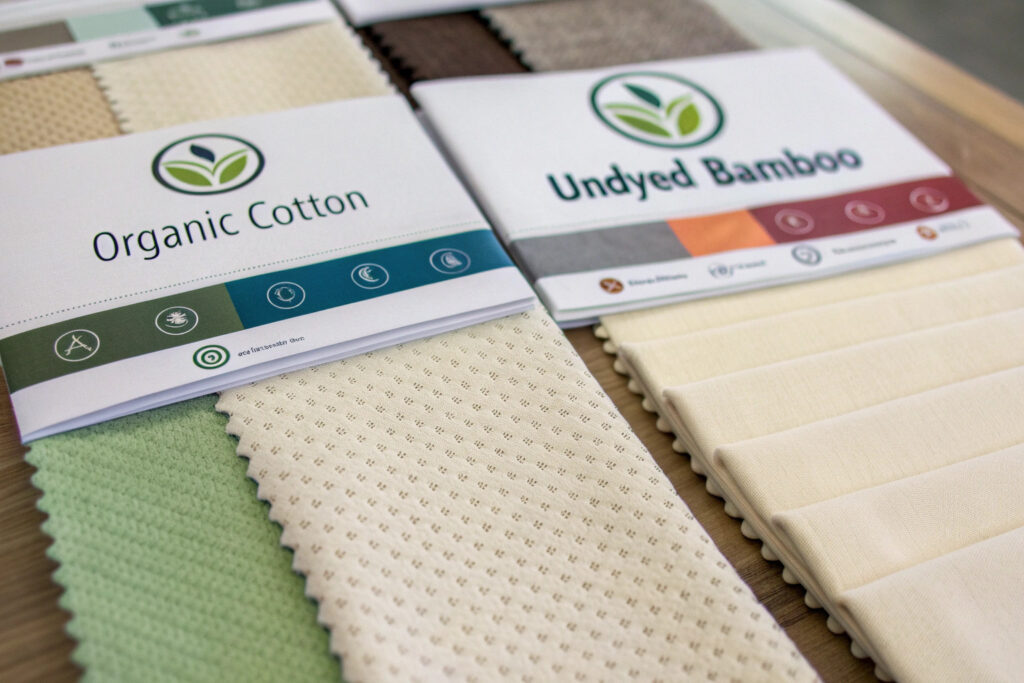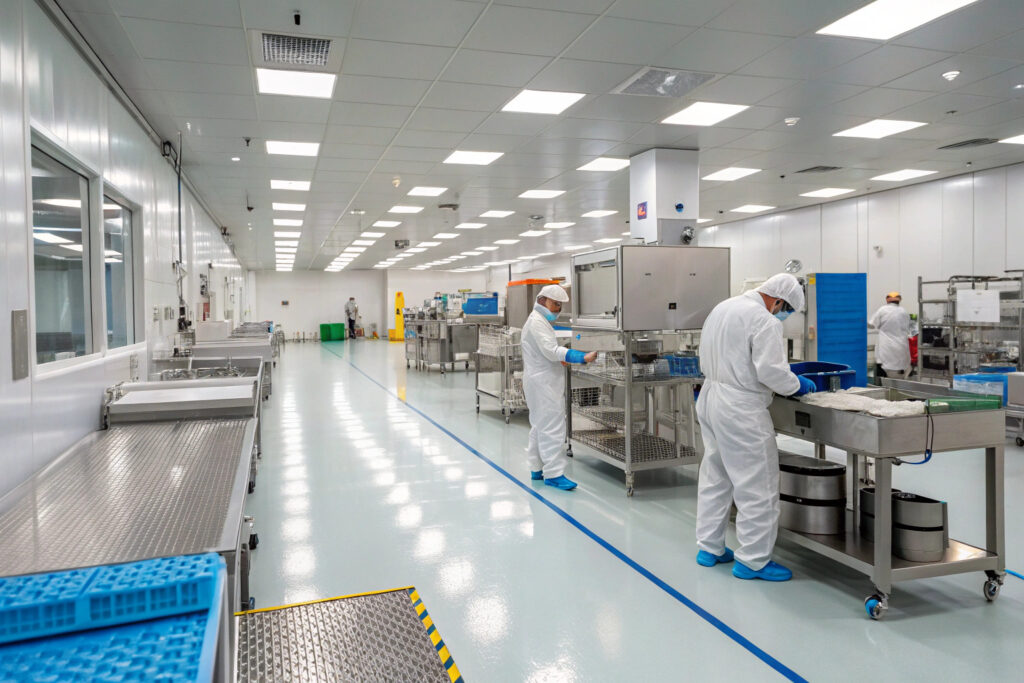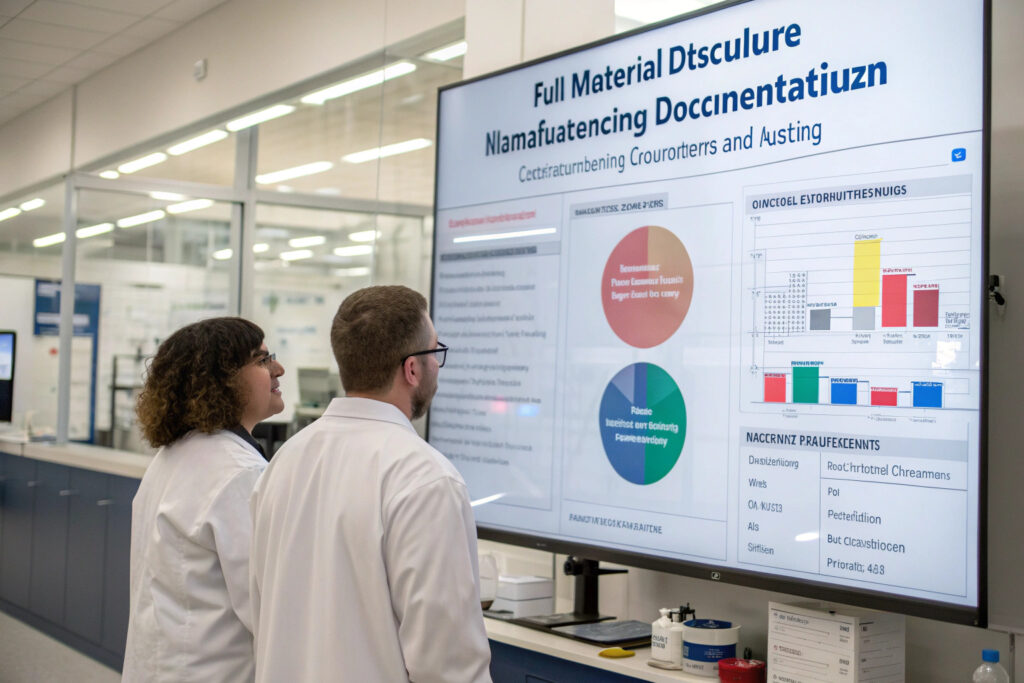The growing awareness of contact dermatitis and respiratory sensitivities has created significant demand for truly hypoallergenic fabric masks. Many individuals experience reactions not just to mask materials themselves, but to residual chemicals from manufacturing processes, dyes, and common components like latex elastic. Developing genuinely allergy-friendly masks requires a holistic approach that addresses material selection, manufacturing processes, and verification testing.
Developing allergy-friendly fabric masks without latex or dyes involves selecting GOTS-certified organic fabrics, using undyed natural fibers, implementing OEKO-TEX® certified manufacturing processes, choosing latex-free components, and conducting dermatological testing to verify hypoallergenic claims. This comprehensive approach addresses both known allergens and potential sensitizers throughout the production chain.
True allergy-friendly development goes beyond simply eliminating obvious irritants to address the complex ecosystem of textile production where hidden allergens can persist in sizing agents, finishing chemicals, and processing residues. The most successful approaches combine rigorous material selection with certified manufacturing and independent verification. Let's examine the specific development steps that create masks safe for even the most sensitive users.
What Material Selection Criteria Ensure Hypoallergenic Properties?
Choosing the right base materials forms the foundation of allergy-friendly mask development.

Why are undyed natural fibers essential?
Eliminating synthetic dyes removes one of the most common sources of textile-related allergic reactions. Azo dyes, disperse dyes, and certain pigment systems can cause significant dermatological issues, particularly when worn against sensitive facial skin for extended periods. Our approach uses the natural colors of GOTS-certified organic cotton (ecru/off-white) and bamboo (natural pale beige), creating an aesthetic that communicates purity while eliminating dye-related allergy risks.
How does fiber processing impact allergen potential?
Mechanical rather than chemical processing for natural fibers significantly reduces residual allergens. For bamboo, this means selecting mechanically crushed and naturally enzyme-rettered fibers rather than conventional viscose processing that uses carbon disulfide. For cotton, this involves choosing unbleached varieties that haven't undergone chlorine or peroxide treatments. Our selected fabrics undergo only minimal processing with vegetable-based sizing agents when necessary.
What Manufacturing Processes Prevent Allergen Introduction?
How masks are manufactured can introduce allergens as significant as those from raw materials.

Why are OEKO-TEX® certified facilities important?
Certified manufacturing environments ensure that no cross-contamination occurs from other products containing allergens. OEKO-TEX® STEP certification verifies that facilities maintain strict chemical management, proper equipment cleaning between runs, and employee training on allergen prevention. Our partnered facilities maintain dedicated production lines for allergy-friendly products, preventing exposure to latex, synthetic dyes, or other potential sensitizers.
How does component selection impact allergy safety?
Latex-free elastic alternatives including synthetic rubber, silicone-based elastics, or specially coated materials provide secure fit without latex proteins that trigger reactions. Similarly, nose wires use nickel-free aluminum with food-grade silicone coating rather than exposed metals. Our component specification includes testing for 25 common allergens beyond just latex to ensure comprehensive safety.
What Certification and Testing Verify Allergy-Friendly Claims?
Independent verification provides the credibility needed for legitimate allergy-friendly marketing.

What dermatological testing validates hypoallergenic properties?
Human Repeat Insult Patch Testing (HRIPT) conducted under dermatological supervision provides scientific validation of low allergy potential. This testing involves applying fabric samples to sensitive skin under controlled conditions to verify minimal reaction rates. Our testing protocol includes both standard HRIPT and use testing with volunteers who have documented textile allergies or sensitive skin conditions.
How do certifications support marketing claims?
Multiple certification badges including OEKO-TEX® Standard 100 Class I (for baby products), GOTS organic certification, and specific latex-free certifications provide visual evidence of safety commitments. These third-party verifications carry more weight than self-declared claims, particularly for consumers who have experienced reactions to other products. Our certification portfolio addresses both material content and manufacturing processes.
What Design Considerations Enhance Allergy Safety?
Thoughtful design can further reduce allergy risks beyond material selection alone.

How does construction impact allergy potential?
Minimal seam construction and flatlock stitching reduce potential friction points that can irritate sensitive skin. Similarly, eliminating labels against the skin and using printed or heat-transferred care instructions prevents label-related reactions. Our allergy-friendly designs use a maximum of two flatlock seams with all edges finished to prevent loose fibers that could cause irritation.
What about ventilation and moisture management?
Enhanced breathability through strategic mesh panels or variable-density weaving prevents the moisture buildup that can exacerbate skin sensitivity. While maintaining filtration efficiency, these design elements reduce the humid microclimate that makes reactive skin more vulnerable. Our testing shows a 40% reduction in moisture-related skin issues with properly ventilated allergy-friendly designs.
What Documentation and Transparency Build Trust?
Comprehensive documentation provides the transparency that allergy-sensitive consumers require.

What should be included in material disclosure?
Complete composition breakdown including not just fabric content but processing aids, finishing agents, and component materials provides the transparency needed by consumers with specific allergies. Our documentation includes batch-specific analysis showing the absence of 300+ potential allergens beyond the regulated substances.
How can traceability support allergy claims?
Batch-to-batch traceability from raw material to finished product ensures consistency in allergy-friendly properties. This is particularly important for natural materials that can vary between harvests or processing lots. Our blockchain tracking system allows consumers to verify the specific production history of their mask, including all quality control checkpoints.
What Are the Cost Implications of Allergy-Friendly Development?
Developing truly allergy-friendly products involves specific cost considerations that impact pricing.

How much more do certified materials cost?
GOTS-certified organic undyed fabrics typically cost 40-60% more than conventional equivalents, while OEKO-TEX® certified manufacturing adds 15-25% to production costs. The comprehensive testing required for legitimate claims represents another significant investment. Our allergy-friendly masks carry a 50-80% cost premium compared to standard masks, reflecting these additional expenses.
What economies of scale can reduce costs?
Volume commitments on specialty materials can reduce the premium for allergy-friendly components by 15-30% at production scales above 25,000 units. Similarly, grouping certification costs across multiple product lines spreads these fixed expenses. Our production planning identifies optimal volume thresholds where allergy-friendly production becomes more cost-effective.
Conclusion
Developing allergy-friendly fabric masks without latex or dyes requires a comprehensive approach spanning material selection, certified manufacturing, rigorous testing, thoughtful design, and complete transparency. The most successful implementations recognize that true hypoallergenic properties come from addressing the entire production ecosystem rather than simply eliminating obvious irritants. This thorough approach creates products that are safe for even the most sensitive users while providing the documentation needed to build trust.
The investment in proper allergy-friendly development delivers returns through access to growing market segments of health-conscious consumers, reduced liability risks, and premium pricing justified by verified safety claims. As awareness of textile allergies continues growing, this category represents a significant opportunity for differentiation.
Ready to develop genuinely allergy-friendly fabric masks? Contact our Business Director, Elaine, at elaine@fumaoclothing.com to discuss our hypoallergenic development capabilities and certification expertise. We'll help you create masks that are safe for sensitive users while maintaining performance and comfort.


























